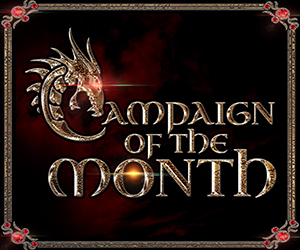Home › Discussions › Campaign Portal Building › Pathfinder Help - Campaign Portal Building Discussions on Obsidian Portal Community Forums
Pathfinder Help
Hey guys, I am planning a Pathfinder Campaign and I need some help. When referring to encounters what is the difference between APL (average party level) and CR (challenge rating) and how do they correspond to each other?
I appreciate any help yall have.
Thanks,
Ken See
I appreciate any help yall have.
Thanks,
Ken See
Howdy, Stranger!
It looks like you're new here. If you want to get involved, click one of these buttons!






Comments
CR is used to describe the level of threat a monster, trap or other challenge provides to the players. It is assumed a party of four or five can take out about five encounters with a CR equal to their APL before their resources are completely expended. Something with a CR one higher than the APL will be difficult, while something with a CR two or three times higher than the APL will really press the players.
CR and APL are used together in this sense by the GM to determine what kinds of challenges to throw at the party without them being to easy or too difficult. CR applies to monsters, APL to a group/party of players. You can read more on it "here":http://www.d20pfsrd.com/gamemastering .
Also, while I am in no means trying to shoo you away from the OP forums, know that they're not super active, and not everyone here knows the Pathfinder rule set. If you have a Pathfinder question you can't get answered, you might try "Paizo's rules forums":http://paizo.com/paizo/messageboards/paizoPublishing/pathfinder/pathfinderRPG/rules . The people here on OP are +super+ nice, and would be willing to help in any way possible if they could, but if you're looking for a quick answer, Paizo is the place to go.
Hope this helped!
Vantes
I will check out the PF forums.
One quick question though. I was wondering is there a table that says "If your PC's APL is X then an encounter's CR should be Y"
That was what I am looking for. I understand them separately just not how they go together.
Thanks for the info!
In my experience, the numbers vary depending on the party's level. Lower level parties need less encounters per day, because they're so squishy; whereas higher level parties are super resourceful and can take on more challenging CRs more frequently.
It's more or less half-art/half-science. It's a number you kind of have to play with in order to get it just right. The relationship is the fewer encounters you throw at them, the higher the CR can be. Remember, an encounter with a CR equal to the APL is of average difficulty: not hard, but definitely not a cake-walk.The PCs in the game I'm running right now are APL 13, and I usually throw three or four encounters of a CR = APL/APL +1, and then a final battle of APL +3; or two encounters with CR = to APL, then one where CR = APL =1, and one where CR = APL +2/3. But my PCs are pretty hardy and high-level, so that comes into effect as well.
If you have the money, I would look at a published Paizo module (or a Pathfinder Society Scenario, they're only around $3) in order to get a feel for how they pick encounters with a CR in relation to APL. That might give you a good idea to start with.
One trick you might try while you're getting the hang of it would be: if you're in doubt about how challenging it should be, opt for a less challenging option. Then, if you realize the encounters are too easy while you're in game at the table, quickly add the "Advanced Simple template":http://www.d20pfsrd.com/bestiary/monster-listings/templates/advanced-creature to a monster to increase the challenge. Your PCs never have to know! ;)
Once again, I really hope this is helping and I'm not just reiterating things you already know. If I am, just let me know! :)
Thanks again!